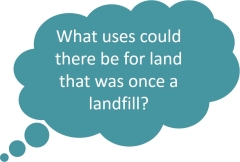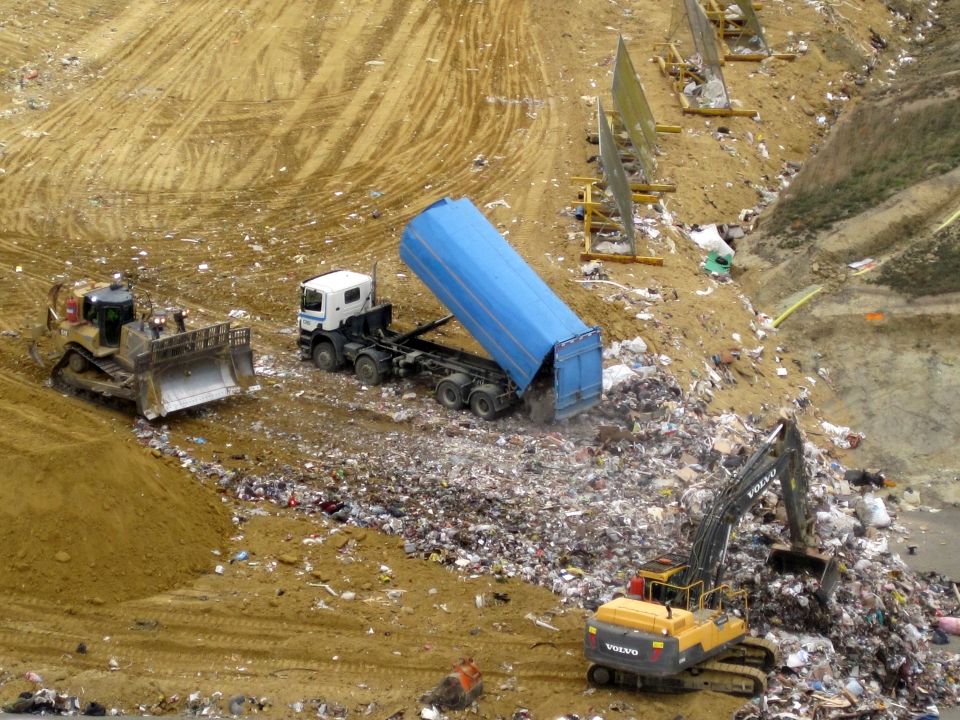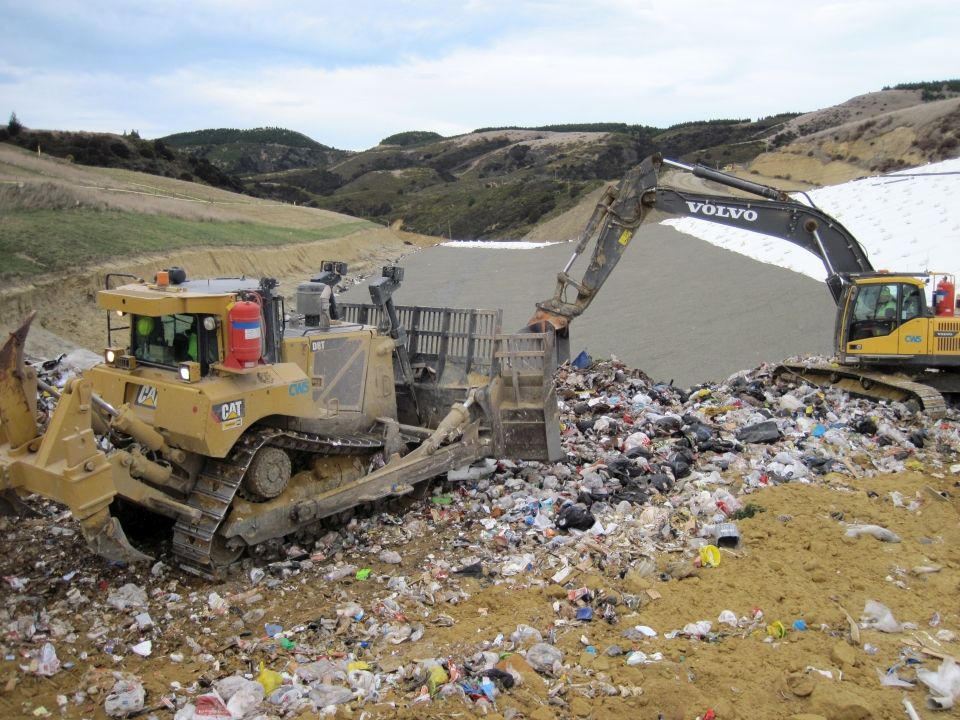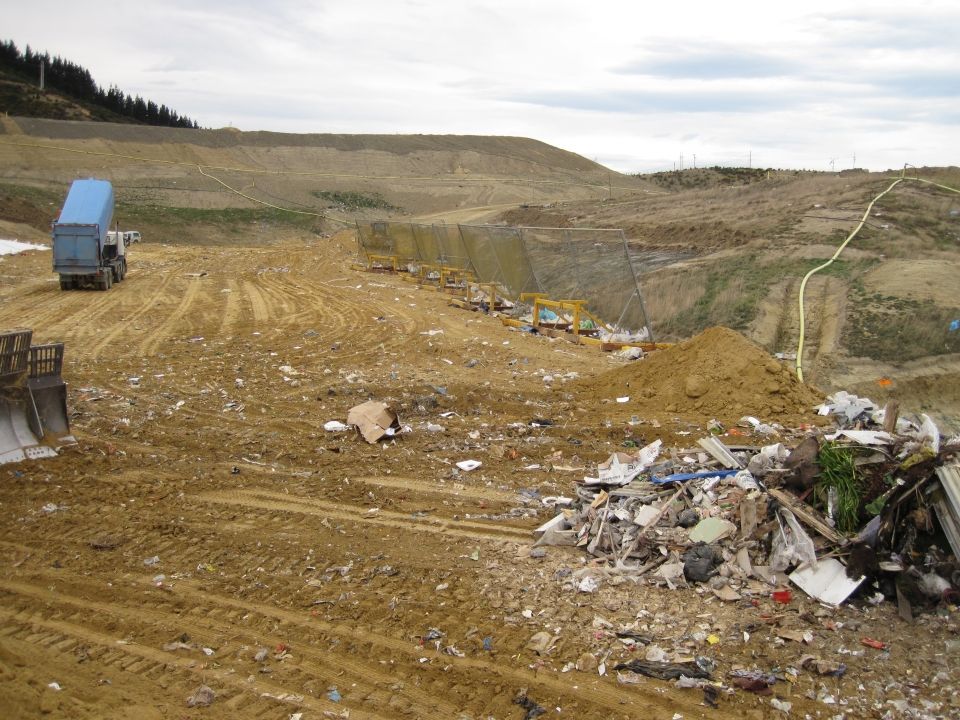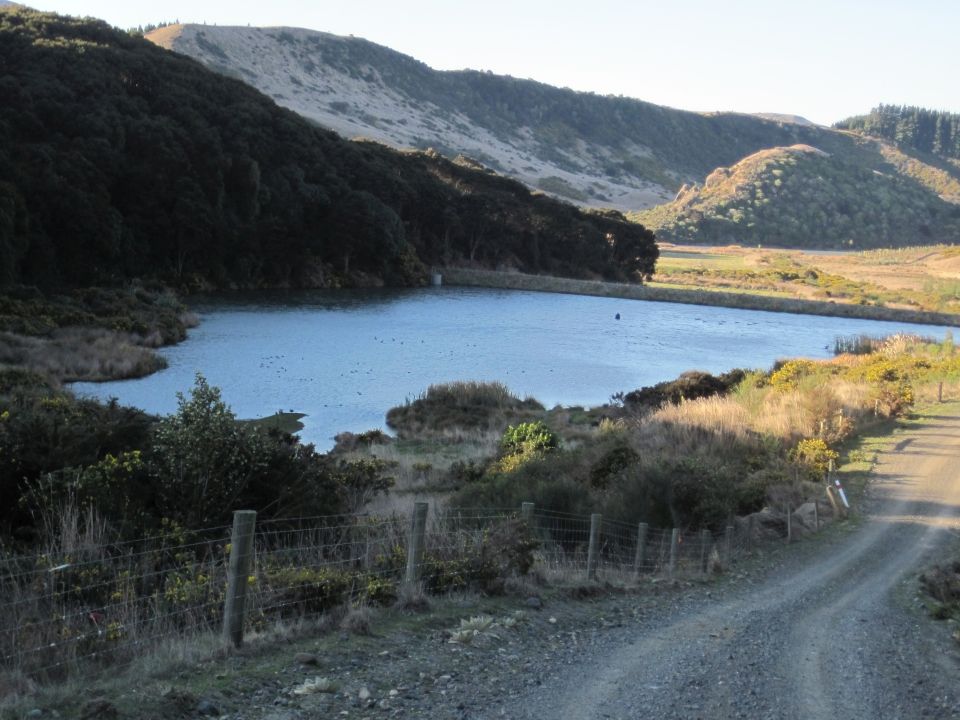Modern landfills are carefully managed to make sure they are environmentally friendly and are good neighbours to the land owners next door. In New Zealand a landfill needs to have consent under the Resource Management Act (RMA). This includes assessing all the environmental impacts. Here are some of them:
Visual
Ensuring that rubbish is always kept under control is important. This often means locating landfills away from populated areas, and making sure rubbish doesn't fly away in the wind.
Noise
Landfills use heavy machinery to transport and compact the rubbish.
Odours
Rubbish usually contains rotting organic material and other materials that smell. Transporting and compacting the rubbish must be done to avoid bad odours being released.
There are also spray units that neutralise odour coming from the landfill.
Wind-blown rubbish
When rubbish is placed in the landfill there is a risk that the wind will pick it up and blow it away. At Kate Valley there are litter fences that catch rubbish should it blow away.
Dust can also be an issue. At Kate Valley, dust levels are monitored and controlled with spraying.
Earthquakes
A modern landfill is designed to be a long-term solution for storing waste. That means it needs to be in a place where there are no active earthquake faults that might fracture the ground and release liquid (also called leachate) into the groundwater.
Wind
Because rubbish is often light weight and easily blown away, a modern landfill needs to be protected from very strong winds. Kate Valley landfill has a consent condition which means operations must be shut down when the wind exceeds a certain speed.
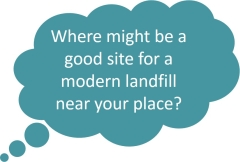
Leachate
When it rains the water seeps down through decaying organic and inorganic wastes, forming leachate. Leachate contains poisons and must be collected and managed. At Kate Valley, leachate is collected and treated. A special landfill liner acts as a barrier between the waste and the ground. This stops leachate seeping into the ground and acts to channel the leachate to a collection point before being treated.
At Kate Valley, the landfill is capped with a thick layer of soil to minimise rainfall absorption. Rainfall that runs off the top of this soil layer is collected, treated, and the clean rainwater is diverted into streams.
Landfill gas (LFG)
LFG is produced as organic waste decomposes under anaerobic conditions. LFG contains up to 60 percent methane, a dangerous greenhouse gas. At Kate Valley, a system of wells within the landfill collects LFG where it is piped to a treatment plant. The LFG is then used as fuel to run 4 generators.
Monitoring and testing
Remote sensors monitor water in nearby ponds and streams. There is also monitoring of LFG, dust, as well as an on-site weather station. Information from these sensors is sent by coded signals on a computer based wireless system called telemetry.
Rehabilitation
It is normal for any project that disturbs the land to have a rehabilitation plan. This plan will describe how the land is returned to the same or better condition when the landfill comes to the end of its life.
